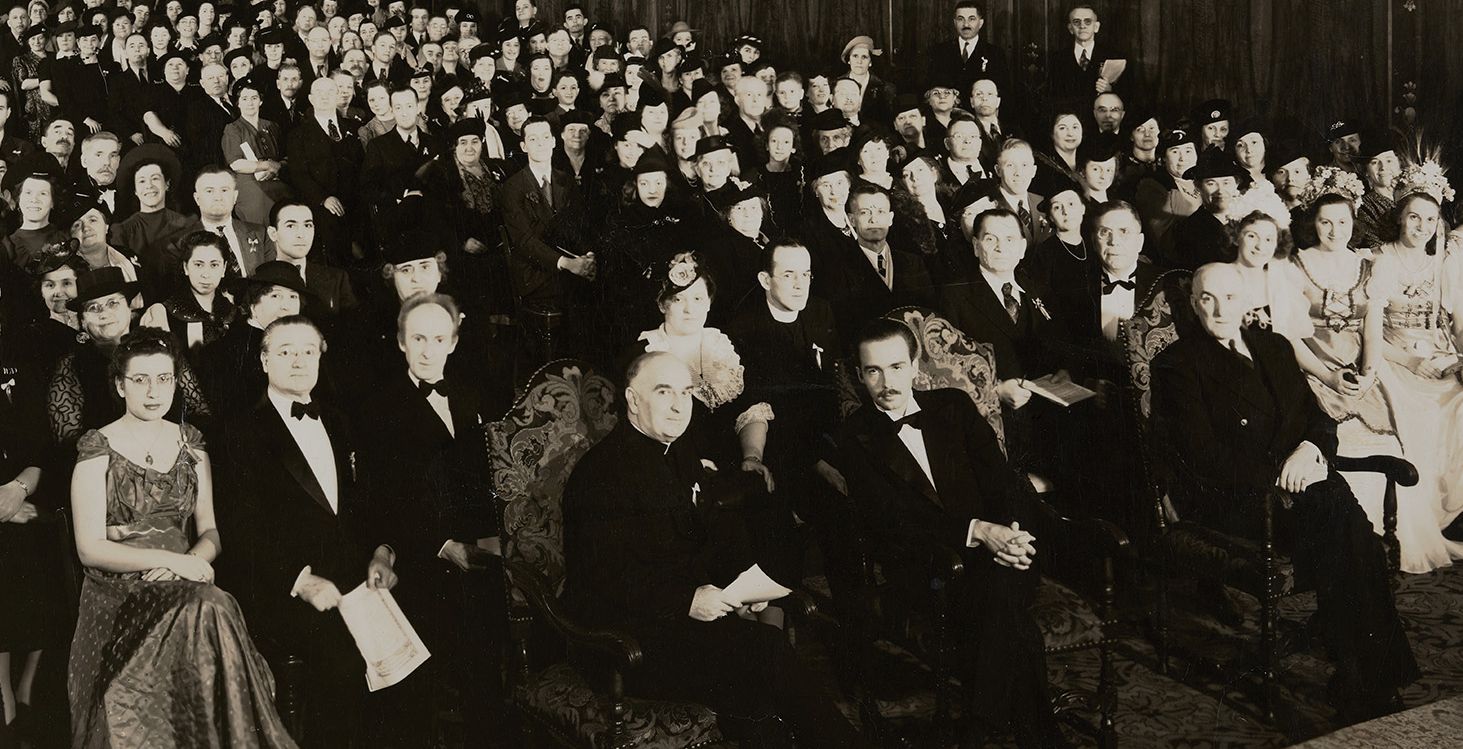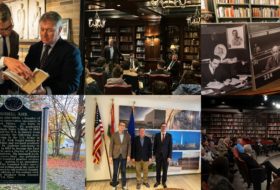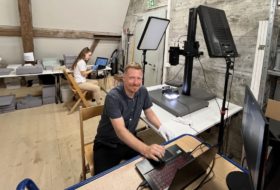From the 1930s onwards, Otto von Habsburg was openly opposed to National Socialism. After the Anschluss, he was wanted by the German authorities on charges of treason, and his personal property and the Habsburg family fortune he had managed were expropriated on Hitler’s personal orders. Rudolf Hess, the Führer’s deputy, ordered the German occupying forces entering Belgium to shoot Otto von Habsburg and his brothers immediately without further procedure if they were captured. In 1940, the family narrowly escaped the Luftwaffe bombing and left their home in Paris for Spain and Portugal, where they helped around 15,000 people, mostly Jews, to escape abroad by obtaining documents. Otto moved to the United States in the summer of 1940, where he remained until the end of 1944. At the same time, Queen Zita and her younger children also moved to the Americas, but during their stay in Belgium they primarily used French and settled for an extended period in French-speaking Quebec, Canada.
Upon his arrival, Otto quickly established contact with leading American circles, including President Roosevelt, with whom he was in constant and direct contact throughout his stay in the United States. Otto used his relationship with the president and other government officials regularly and, at first, effectively for the benefit of Austria and Hungary. He was lobbying for the restoration of a free, independent Austria and for a way for Hungary to break out of the burdensome Hitler alliance to prevent a Soviet invasion. The American democratic institutional system served as a good example for Otto, who was acknowledged to be well prepared and with a European perspective. He conceived the idea of establishing a “Danube Federation” uniting the peoples of Central Europe in a single state as a counterweight to both German and Russian aggression. However, his ambitions were severely hampered by the influence of the powerful anti-Hungarian and anti-Hapsburg Czech emigration and the Benešes’ American supporters.
From the moment he arrived in America, Otto, who had a Hungarian identity, played an intensive role in the political activities of the Hungarian emigration. He visited the cities with the most populous Hungarian colonies, met with representatives of the most important Hungarian organizations and churches, and visited 32 states in the country in one year. The Hungarian-American community was politically very divided at the time, and there were further fault lines within the various ideological groups. Otto, however, was less concerned with these, and his engaging personality, knowledge, clear thinking and eloquent Hungarian speech easily won over skeptics in a personal meeting.
The American Hungarian Federation, founded in 1906 in connection with a fundraising campaign to install a statue of Kossuth in Cleveland, was not only the oldest but also the largest Hungarian organization in the United States. The anniversary of the Hungarian Revolution of 1848 was traditionally celebrated with a large gathering, and the heir to the Habsburg throne was invited to be the guest of honour on 15 March 1941 in Chicago.
Otto arrived in Chicago a few days before the ceremony, driving his own car, where he spoke first to the alumni of the Jesuit Loyola University on the international situation of Catholicism, and then gave lectures at Rosary College and the Catholic Saint Xavier University. In 1940, there were about 18,000 people claiming Hungarian as their mother tongue in Chicago[1] and the March 15 celebrations were attended by a significant number of celebrants. A consistent opponent of totalitarianism in all its forms, Otto delivered a speech praising the memory of the Revolution, his main thesis being that “there is only one kind of freedom, and slavery is also always one kind”. The editor-in-chief of the American Hungarian Népszava wrote in a 1940 article about Otto Habsburg’s attitude to the Hungarian War of Independence: By visiting the house of Kossuth, Otto was honouring the memory of the great Hungarian freedom fighter, and could the Hungarian people have received greater satisfaction than to have the head of the Habsburg house pay homage to the memory of Kossuth, whose great-great-great-uncle had taken up arms against the Hungarian freedom fighter and his supporters. (…) The ideals which the young head of the House of Habsburg advocates – and which are today’s versions of the great Kossuth’s ideals – are not dangerous to the Hungarian nation. (…) No one need fear that Otto might poison the soul of anyone with harmful, false ideas, for Otto is preaching the ideas of Kossuth today.”[2]
The large photo that recently entered our Foundation’s collection is a group photo taken at the ceremony, showing the crowded banquet hall of the Congress Hotel. Otto von Habsburg is seated in the centre in front of the stage, with Auxiliary Bishop Bernard James Sheil of Chicago seated to his right, the Hungarian flag is held by Pál Zsámboky, the former tutor of Otto, next to him is Heinrich Degenfeld, Otto’s teacher and adjutant, and in the centre is János Sinkó, a Chicago plastics manufacturer who was very active in Hungarian affairs. There are also members of various medical or cultural associations, such as the First Hungarian Art and Youth Circle of Chicago, workers in the Chicago manufacturing industry and Catholic priests. The photo by Empire Studio shows in fascinating detail, right down to the people in the back rows, the faces of the Hungarian emigrants of the time.
The high resolution and enlargeable photo can be viewed here.
Szilveszter Dékány
[1] Zoltán Fejős: Two Generations of Hungarians in Chicago, 1890-1940: Preservation and Change of Ethnic Heritage. Budapest, Central Europe Institute, March 1993.
[2] Pál Nadányi: Otto and the Hungarian Americans In: American Hungarian Népszava, April 19, 1940 p 4, 8



